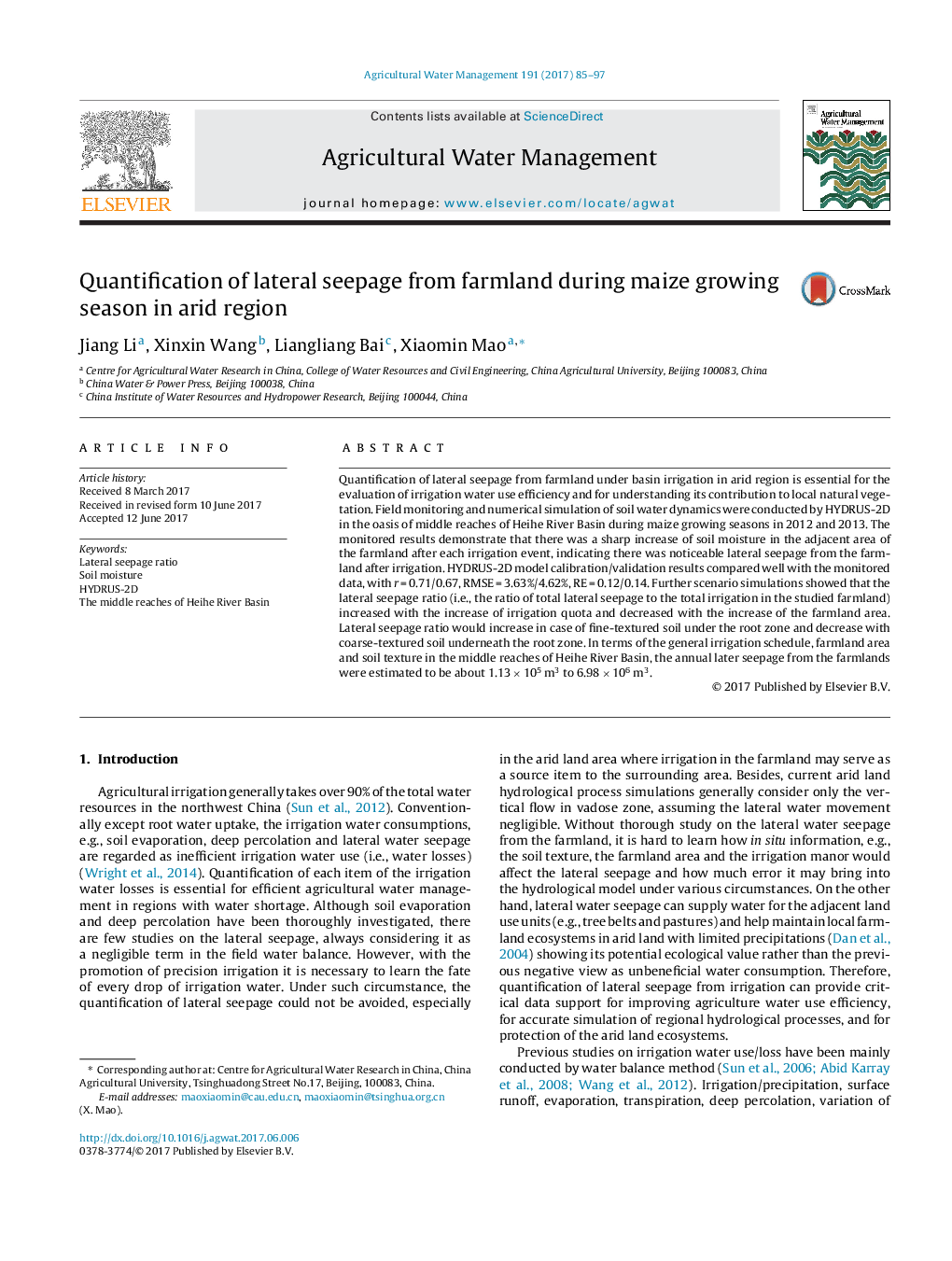| Article ID | Journal | Published Year | Pages | File Type |
|---|---|---|---|---|
| 5758297 | Agricultural Water Management | 2017 | 13 Pages |
Abstract
Quantification of lateral seepage from farmland under basin irrigation in arid region is essential for the evaluation of irrigation water use efficiency and for understanding its contribution to local natural vegetation. Field monitoring and numerical simulation of soil water dynamics were conducted by HYDRUS-2D in the oasis of middle reaches of Heihe River Basin during maize growing seasons in 2012 and 2013. The monitored results demonstrate that there was a sharp increase of soil moisture in the adjacent area of the farmland after each irrigation event, indicating there was noticeable lateral seepage from the farmland after irrigation. HYDRUS-2D model calibration/validation results compared well with the monitored data, with r = 0.71/0.67, RMSE = 3.63%/4.62%, RE = 0.12/0.14. Further scenario simulations showed that the lateral seepage ratio (i.e., the ratio of total lateral seepage to the total irrigation in the studied farmland) increased with the increase of irrigation quota and decreased with the increase of the farmland area. Lateral seepage ratio would increase in case of fine-textured soil under the root zone and decrease with coarse-textured soil underneath the root zone. In terms of the general irrigation schedule, farmland area and soil texture in the middle reaches of Heihe River Basin, the annual later seepage from the farmlands were estimated to be about 1.13 Ã 105 m3 to 6.98 Ã 106 m3.
Keywords
Related Topics
Life Sciences
Agricultural and Biological Sciences
Agronomy and Crop Science
Authors
Jiang Li, Xinxin Wang, Liangliang Bai, Xiaomin Mao,
